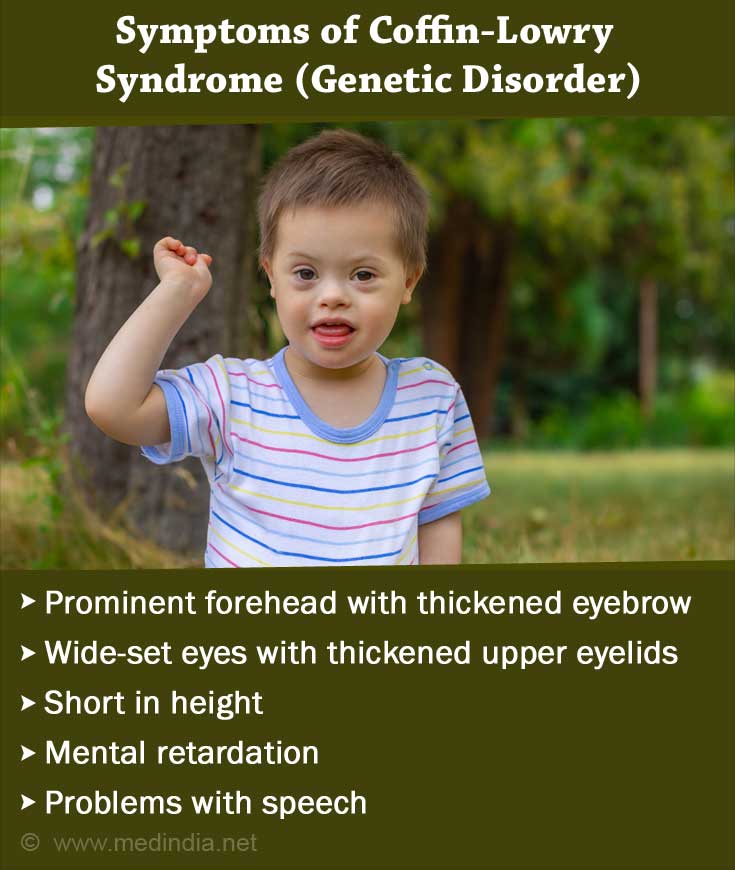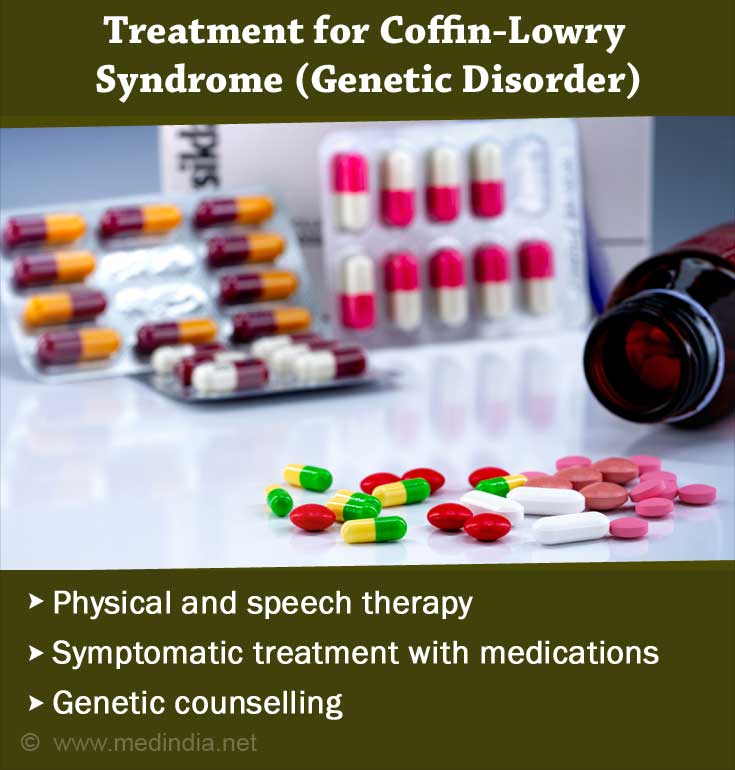- Coffin Lowry Syndrome - (https://rarediseases.org/rare-diseases/coffin-lowry-syndrome/)
- About Coffin-Lowry syndrome - (http://ghr.nlm.nih.gov/condition/coffin-lowry-syndrome)
- Neurological Diseases & Disorders A-Z from NINDS - (http://www.brainfacts.org/diseases-disorders/diseases-a-to-z-from-ninds/coffin-lowry-syndrome/)
What is Coffin-Lowry Syndrome?
Coffin-Lowry Syndrome is a rare genetic disorder affecting several parts of the body.
It is characterized by skeletal anomalies, intellectual disability and episodes of collapse on hearing sudden loud noise or when excited. It affects males more severely as compared to females.
What are the Causes of Coffin-Lowry Syndrome?
Coffin-Lowry syndrome is caused by a mutation in the RPS6KA3 gene found on the X chromosome. The defective gene results in the defect in a protein, which is involved in several important functions of the body including in the brain.
The type of inheritance in Coffin-Lowry Syndrome is called ‘X-linked dominant inheritance.’ The condition affects both males as well as females, though the syndrome is usually mild in females.
About 70-80% of affected individuals have no family history of this condition.
What are Symptoms of Coffin-Lowry Syndrome?
Severity of symptoms in patients with Coffin-Lowry syndrome is usually more in males than females. Typical facial features in affected males can be easily identified in late childhood and adulthood.
Facial features in affected individuals include the following:
- Prominent forehead with thickened eyebrow ridges and narrowed temples
- Few hair on the scalp
- Wide-set eyes with thickened upper eyelids and downslanting eyelid slits
- Broad nasal bridge having thick cartilage (septum)
- Thick prominent lips with prominent chin and underdeveloped upper jaw
- Prominent ears
- Small head
- Dental anomalies
Abnormalities in limb may include:
- Large soft hands with thick fingers tapering toward the tips
- Prominent transverse crease in the hand)
- Short big toe
- Shortening of long bones
Other abnormalities may include:
- Short in height
- Pointed or sunken breast bone
- In spine, abnormal front-to-back and side-to-side curvature (kyphosis and scoliosis, respectively) may be present, which worsens with age.
- Cardiac problems, hearing loss, vision loss, problems with speech
- Mental retardation, which is often worse in males

- Episodes of brief collapse without loss of consciousness (drop attacks) after an unexpected noise or emotional event. These are referred to as stimulus-induced drop episodes (SIDEs).
How is Coffin-Lowry Syndrome Diagnosed?
Diagnosis of Coffin-Lowry syndrome is based on the medical history of the patient, findings on physical examination, imaging tests, enzyme studies and gene testing.
X-ray and neuroimaging studies can diagnose the skeletal and other abnormalities. Genetic testing on blood sample or cells from cheek swab may reveal mutation in the RPS6KA3 gene.
How to Treat Coffin-Lowry Syndrome?
Treatment of Coffin-Lowry syndrome depends on the symptoms of the patient. The patient’s cardiac, hearing and eye functions should be regularly checked. Further, patients should also be monitored for progressive kyphoscoliosis that can be life threatening since a bent spine can affect breathing and cardiac function.
Treatment also involves physical and speech therapy and educational services. Clonazepam can be used to treat drop attacks. Other drugs like valproic acid and selective serotonin reuptake inhibitors have also been used. Genetic counselling can be helpful to patients and their families to understand the mode of inheritance and the chances of having a baby suffering from the condition.

Health Tips
No cure is available for Coffin-Lowry Syndrome. But, specific symptoms, developmental delays and behaviors can be treated and addressed.
- Appropriate vision and hearing testing needs to be done. Impaired hearing can be improved by hearing aids and cochlear implants.
- Identification of heart defects and skeletal abnormalities at early stages should be done to prevent any serious complications later.
- Neurological check-ups and growth monitoring, should be carried out at regular intervals.
- Children with Coffin-Lowry syndrome must receive extensive dental check-up and preventive dental care. They should also have access to speech and language therapies.
- To prevent SIDE episodes, affected people should be kept away from situations that could trigger attacks.
- Contact with local authority and support groups should be maintained to obtain help quickly whenever necessary.











